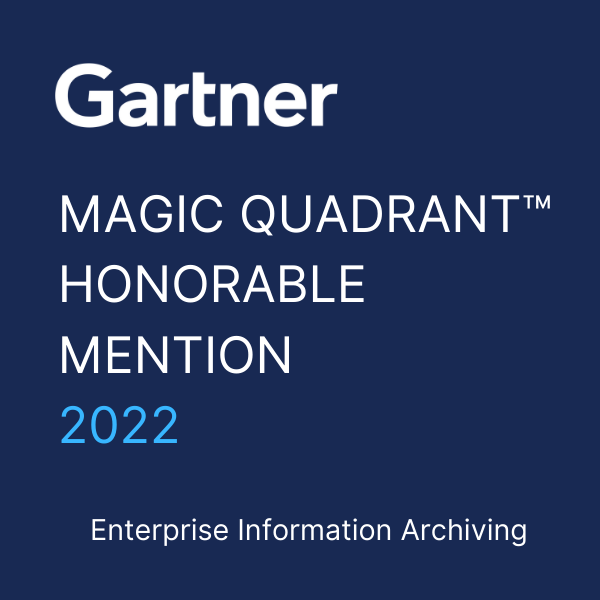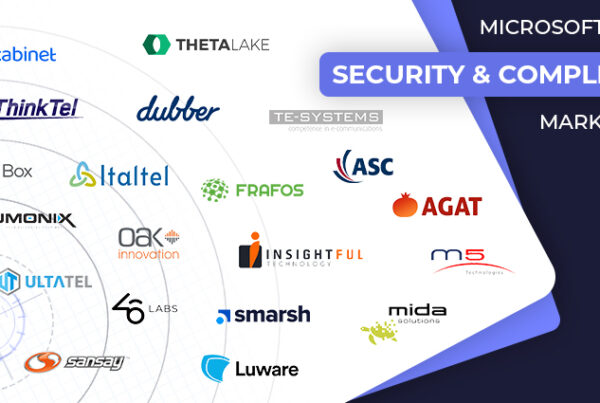
The COVID-19 pandemic radically altered the way millions of people around the world work, attend school, handle their financial transactions, visit their healthcare providers and more. Across all industries, people now collaborate with their co-workers, partners and customers by switching between video conference calls on multiple different platforms and sharing information through screen shares, chat windows and messaging services. While the adoption of digital collaboration technologies has been growing for several years, the pandemic dramatically accelerated this trend. Analysts estimate the global collaboration software market will more than double from $8.9 billion in 2019 to at least $23 billion by the end of 2020. This trial-by-fire success in remote work and the efficiencies it has introduced means the new work-from-anywhere era is likely here to stay even long after the pandemic subsides. This new business landscape brings unique security and compliance risks, for which many organizations are unprepared.
In fact, a March survey of financial services and insurance professionals uncovered that 100% of broker-dealers and 60% of insurers were only somewhat prepared for the use of video conferencing and stated if usage increased more than 10%, they would need to implement additional security and compliance controls.
Fast forward just a few short months and the increased shift to widescale remote work has brought challenges, which underscore earlier findings of an unprepared workforce. Numerous headlines have highlighted the data security and privacy risks associated with many of these platforms, as well as the embarrassing human errors that can lead to devastating reputational damage for a business. While modern collaboration tools such as video conferencing, file-sharing, chat, webcams and digital whiteboards have helped business continue during a time when face-to-face meetings are impossible, they can also increase the risk of data breaches and regulatory compliance violations.
Understanding shifting data protection and security requirements
Organizations across industries, from manufacturing and technology to financial services and government, face increasing requirements to protect sensitive data in communications while adhering to industry-specific regulations for supervision of their communications internally, as well as with customers.
As the day-to-day activities of these businesses move beyond email and traditional voice communications and increasingly into integrated voice, video and chat platforms like Microsoft Teams, Cisco Webex, RingCentral and Zoom, everything that is shared, shown, spoken about on video, over telephone, shared in file upload, or written in a chat window can become subject to regulatory oversight. With their many different communications channels and means of sharing information, these types of collaboration platforms increase the risk of an employee either intentionally or unintentionally leaking sensitive data or violating regulatory compliance requirements. The survey cited previously also revealed a minimal understanding of regulator’s requirements for the use of new collaboration systems, with 81% indicating that they do not understand or only partially understand the regulatory requirements for digital transformation. Therefore, along with implementing new security for collaboration tools, education and training will be equally important when staying in compliance.
AI is key to scaling security for video and collaboration tools
Security and compliance teams are struggling to keep pace with the increasingly complex collaboration applications being used in their organizations and how to effectively secure, monitor and report on them for compliance purposes. Until recently, it has been difficult to even contemplate how to capture, retain, apply legal hold and effectively review unified video, voice and chat collaboration at scale. That challenge is compounded with the seemingly impossible task of efficiently and effectively reviewing and supervising what was said, shared, shown and typed in those communications. Beyond the magic needed to effectively capture all of the communication modes and vectors, analyzing, reviewing and supervising the content of those communications becomes an insurmountable burden for a human to navigate manually. Even traditional methods of monitoring communications, such as relying on basic word searches of text and transcripts, misses important visual cues and are over-reliant on transcript accuracy. However today, thanks to advancements in artificial intelligence (AI) and machine learning (ML), modern security and compliance solutions designed specifically for collaboration platforms make it possible to effectively and efficiently perform compliance supervision at scale.
By integrating AI that uses deep learning across curated detections built by experts and designed to find risk across visual, voice and text content, combined with rich extraction infrastructure for optical character recognition (OCR), image analysis, transcription, facial recognition and more, modern solutions can automate the detection of both compliance and information security risks. Incidents that are identified as the highest level of risk can be automatically flagged to the security or compliance teams for immediate review, escalation and remediation. At the same time, AI can be added to review workflows and workspaces to help humans avoid manual tasks and speed up responsiveness and efficiency.
Given that most organizations use multiple collaboration tools in a heterogenous way that is unlike their simple, single channel back-and-forth communications over email, security and compliance teams simply cannot keep pace with the need to identify risk and prevent compliance violations across all these channels and tools. With the use of modern, AI-based security and compliance tools that have been purpose-built for collaboration platforms, organizations can automate and streamline the supervision and securing of these communications tools. This enables businesses to enjoy the full benefits of these rich information sharing and communication tools, while making their security and compliance teams more productive. As the pandemic persists and employers continue to build a more permanent work-from-anywhere model, security and compliance operational issues with the expanded use of video will rise to the top of every CISO and Chief Compliance Officer’s list for 2021 and beyond. It will be imperative for organizations of all sizes to implement a collaboration-first security and compliance strategy to reduce the risk of a potentially catastrophic data breach or costly compliance violation.
This article first appeared on CPO Magazine on January 14th 2021.
Access the original article by Devin Redmond here!











